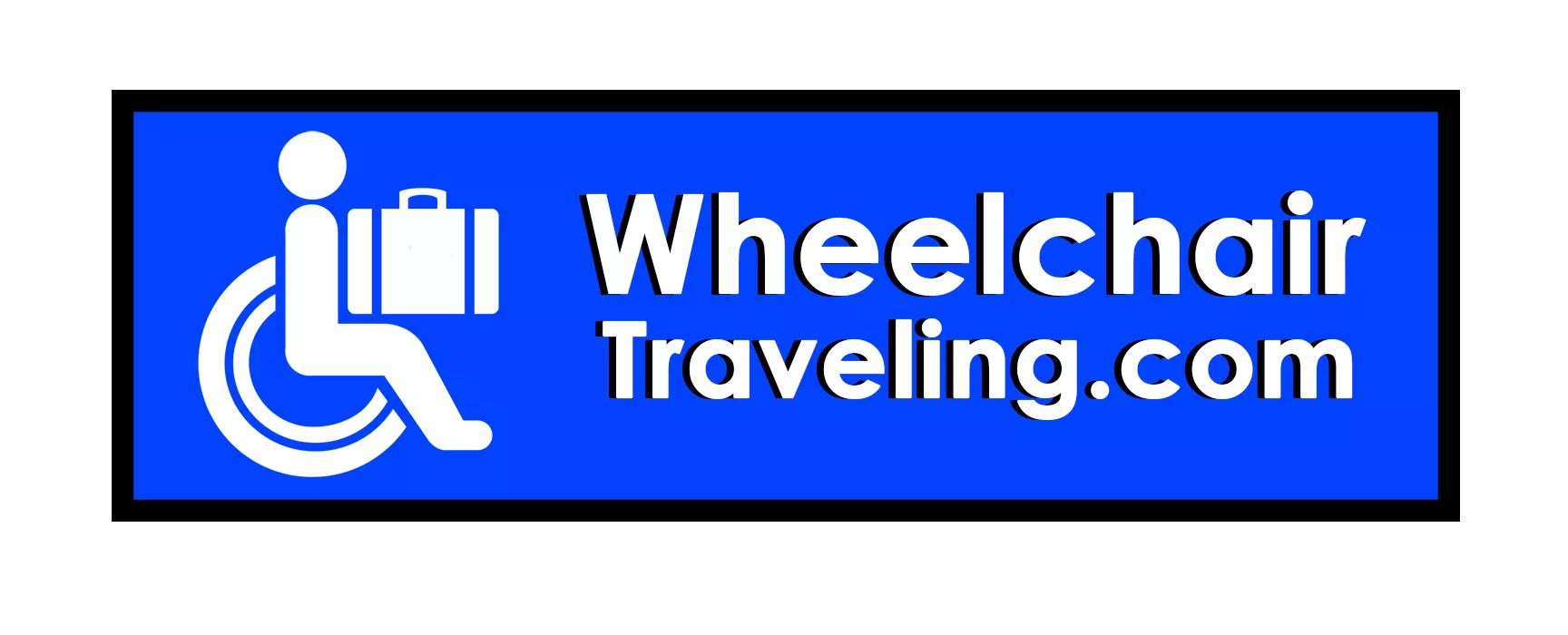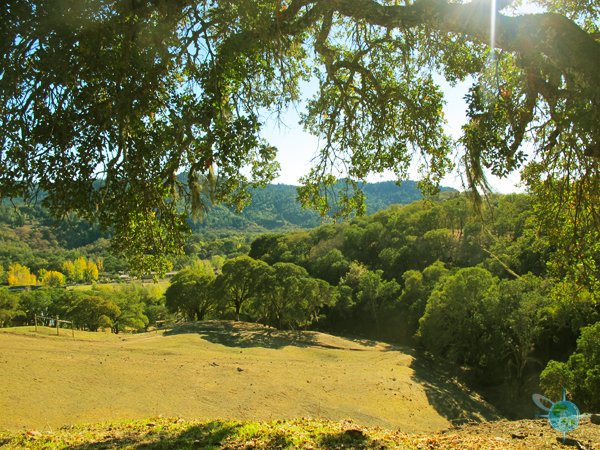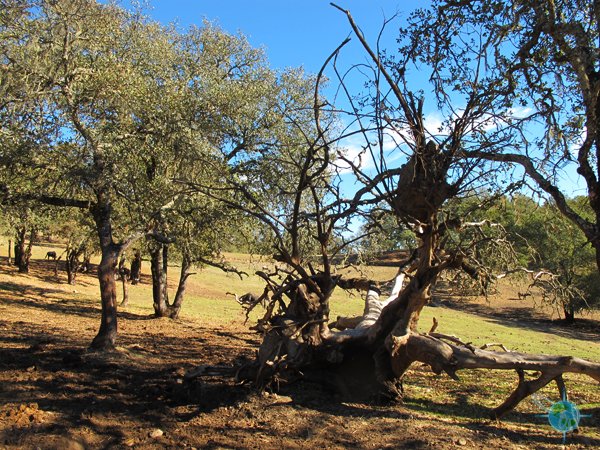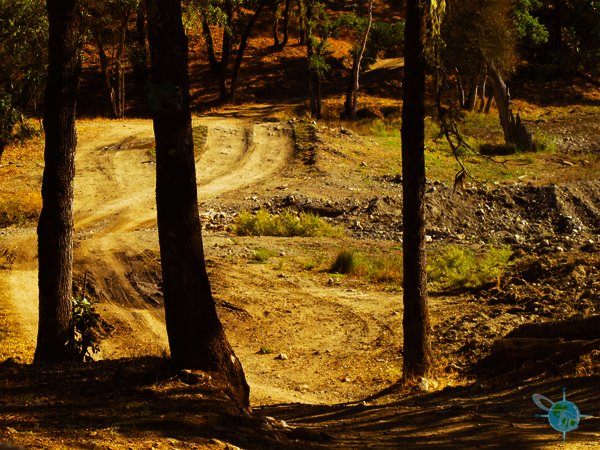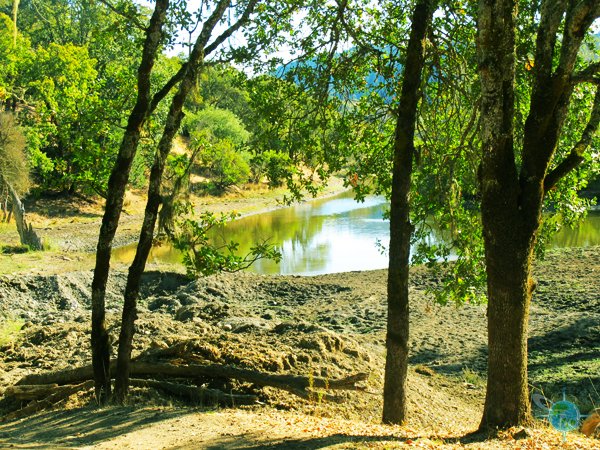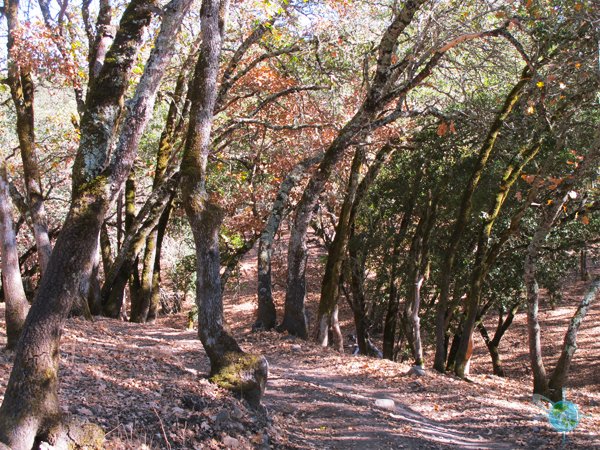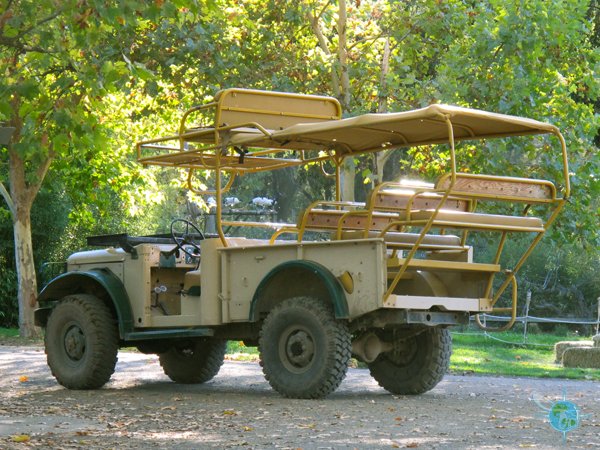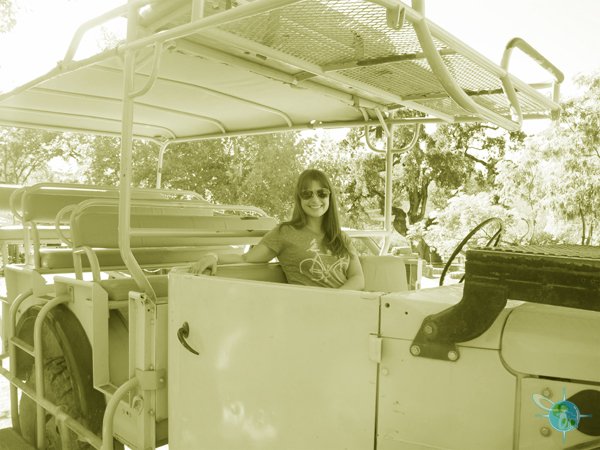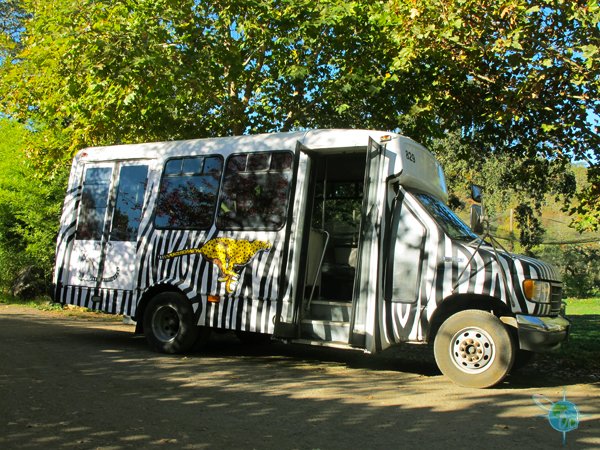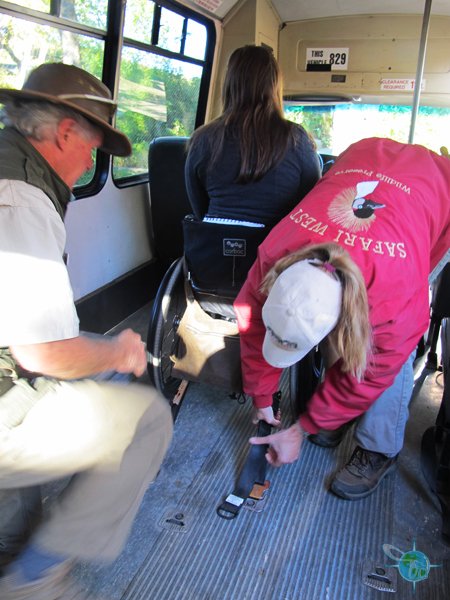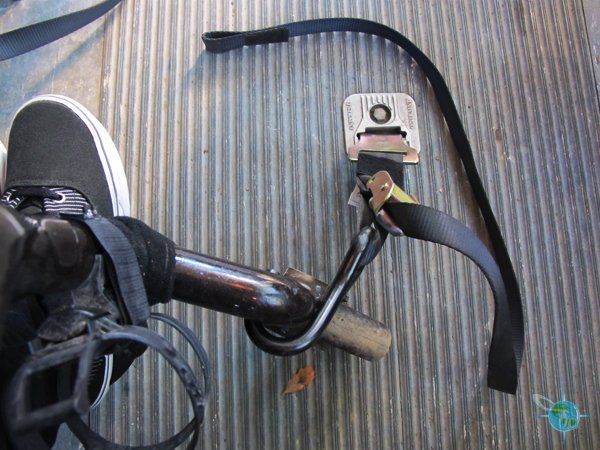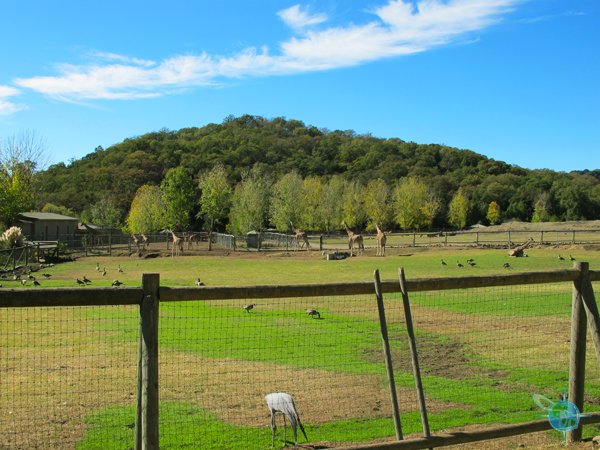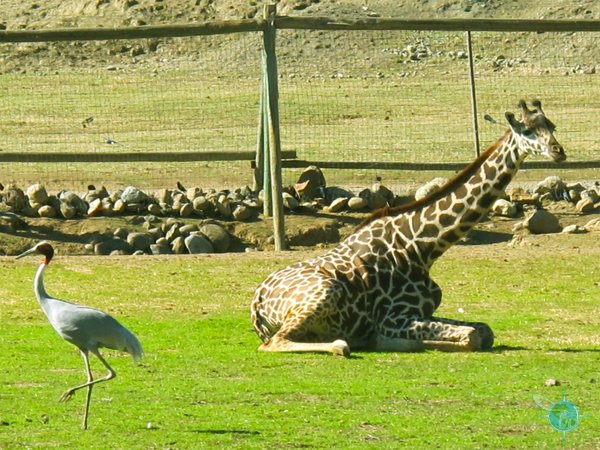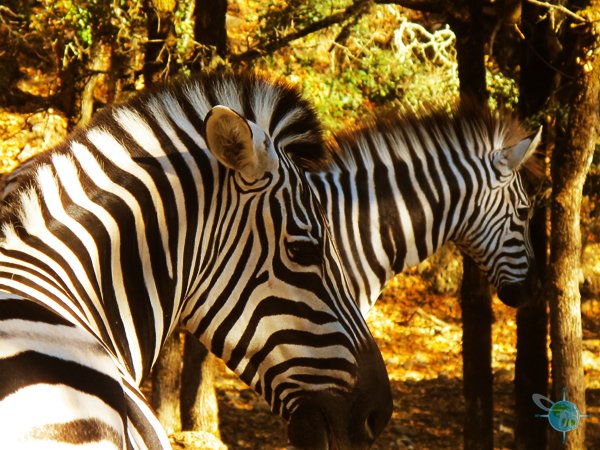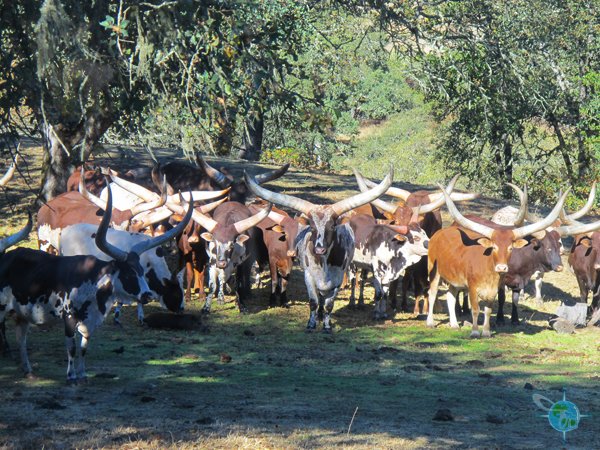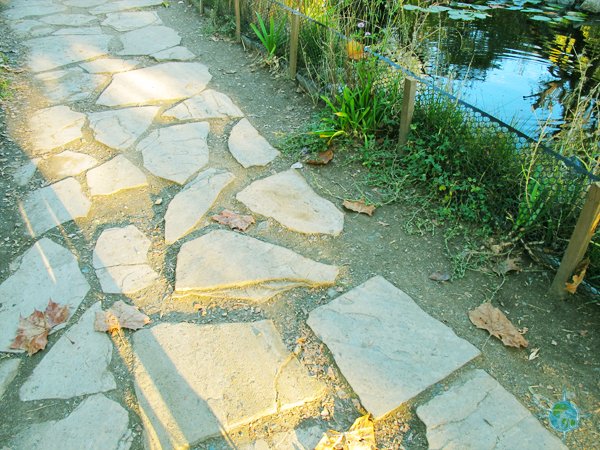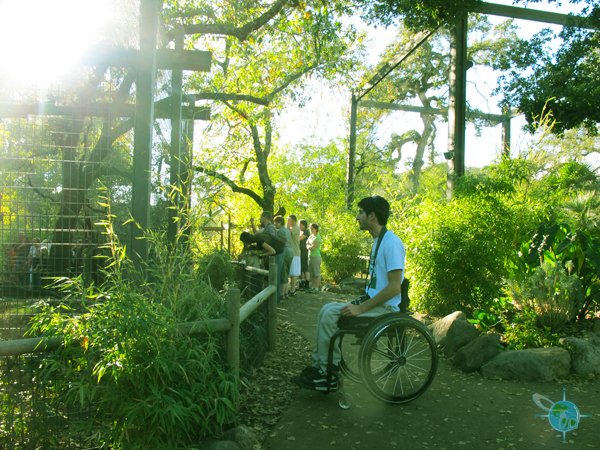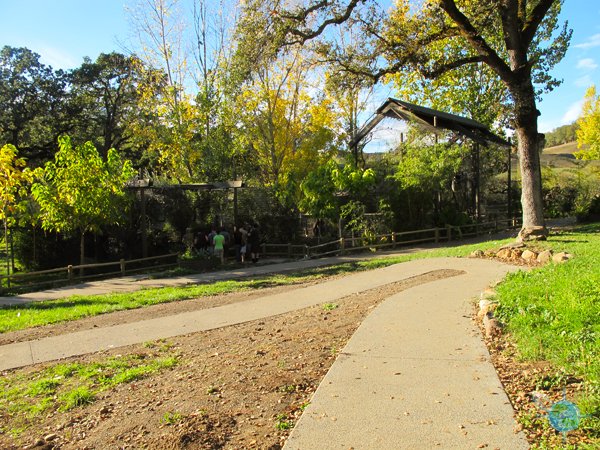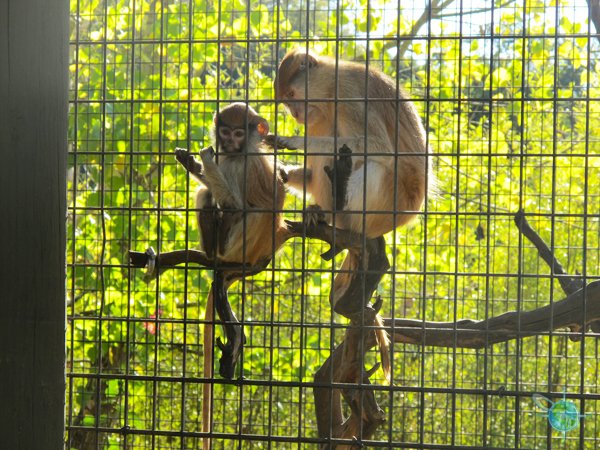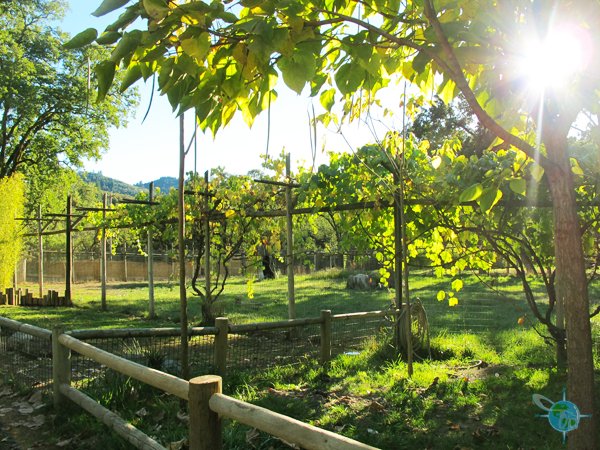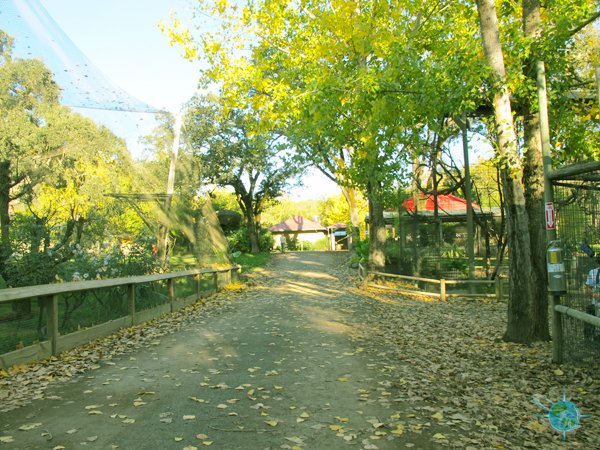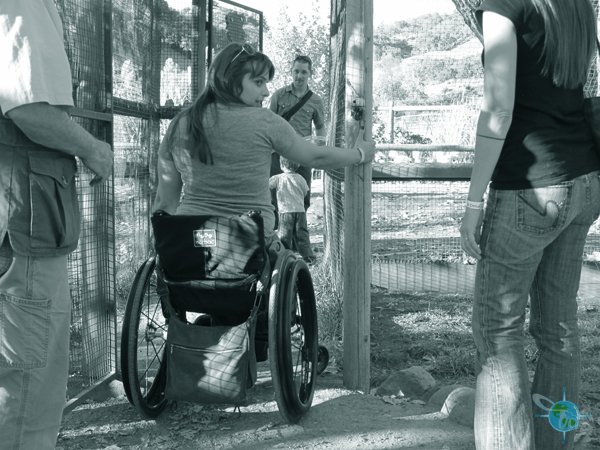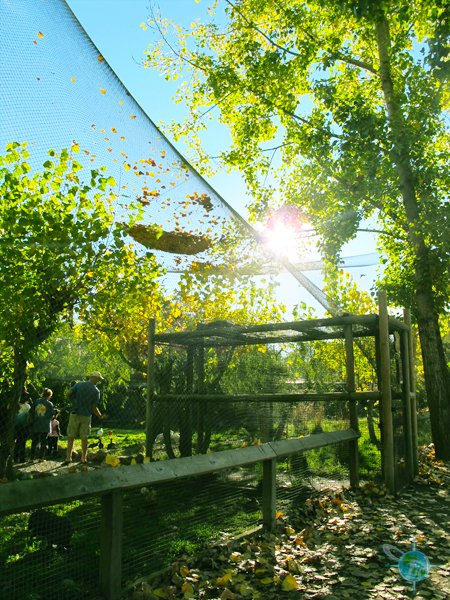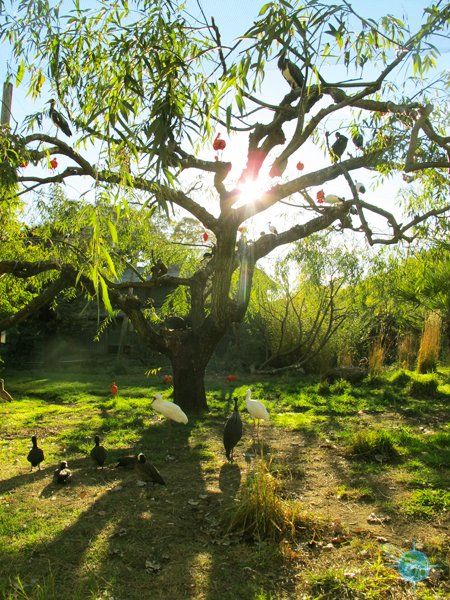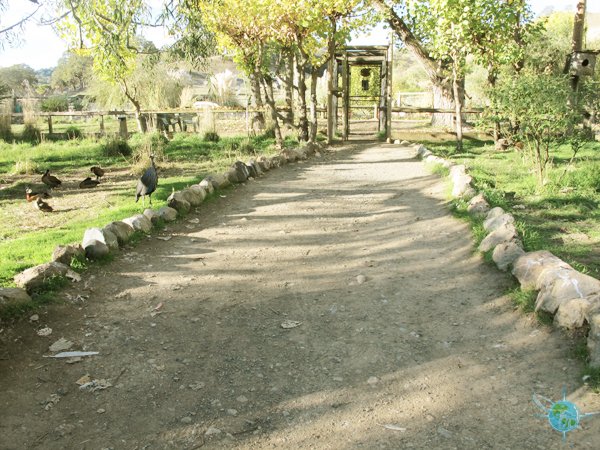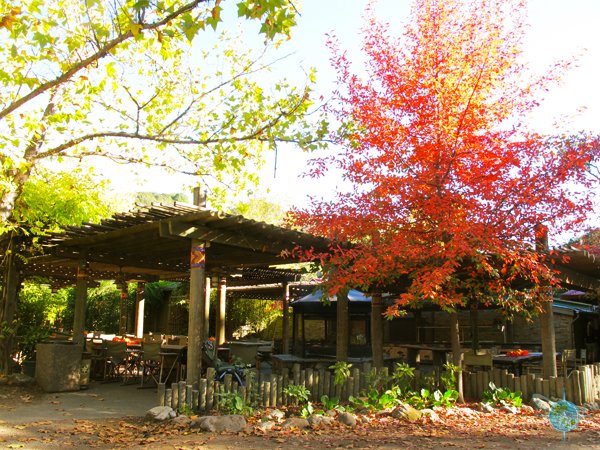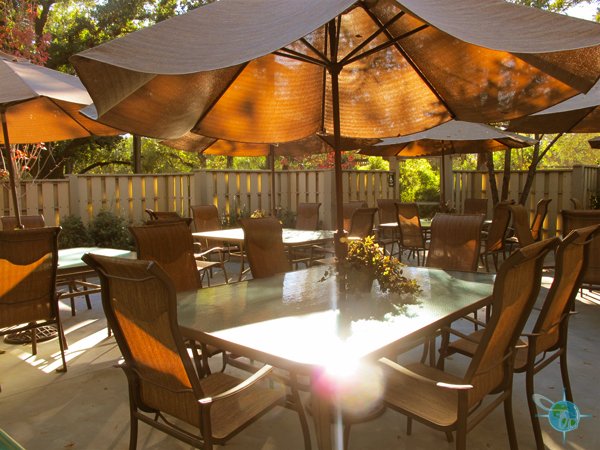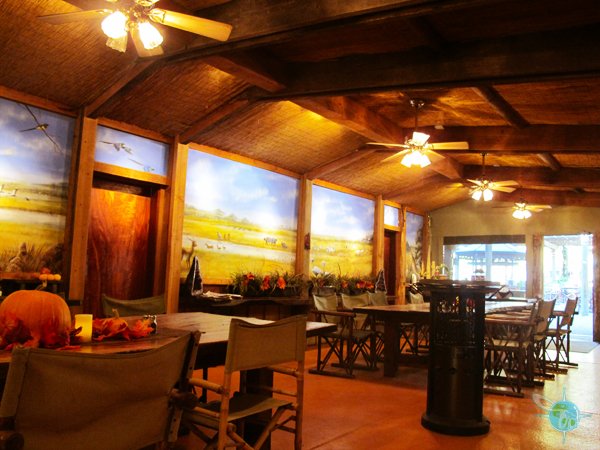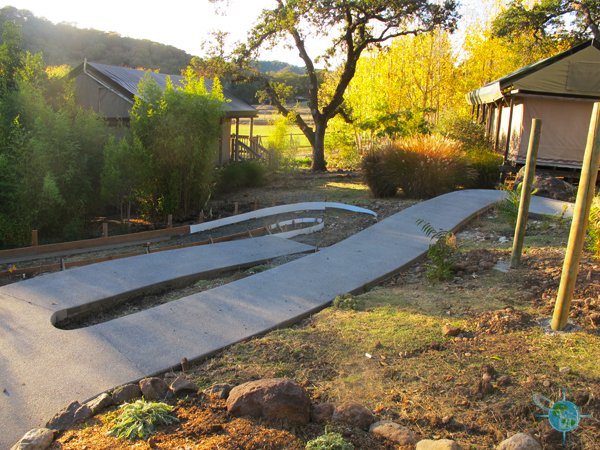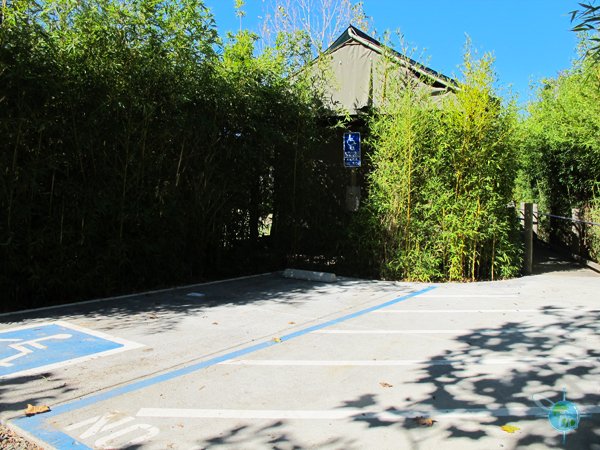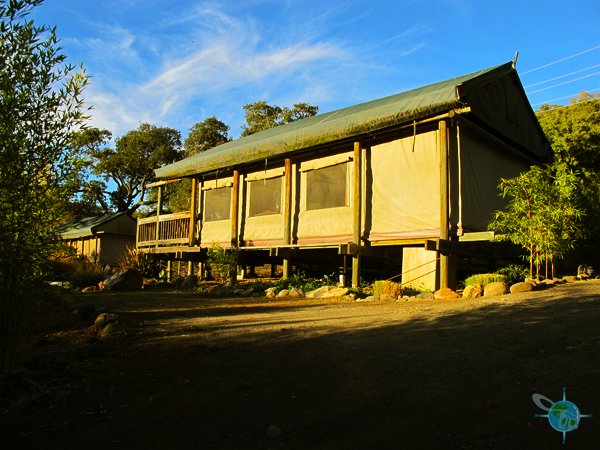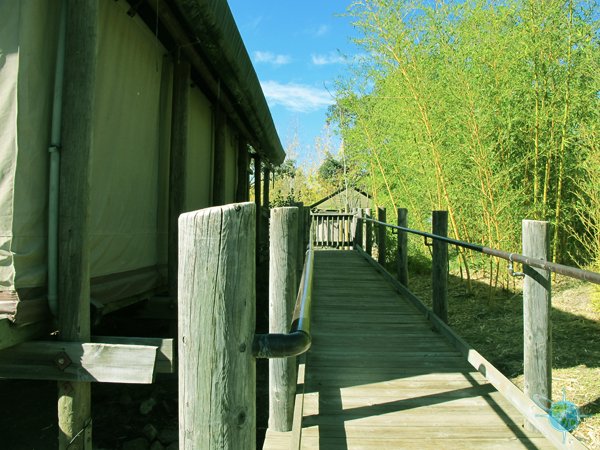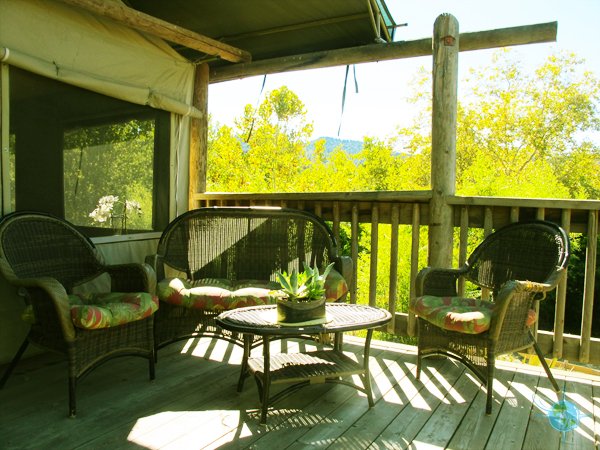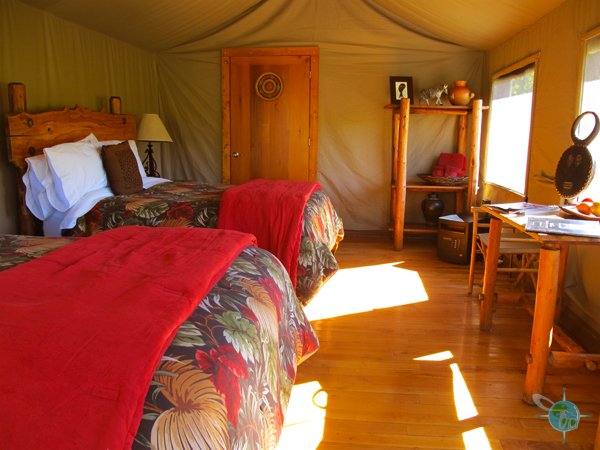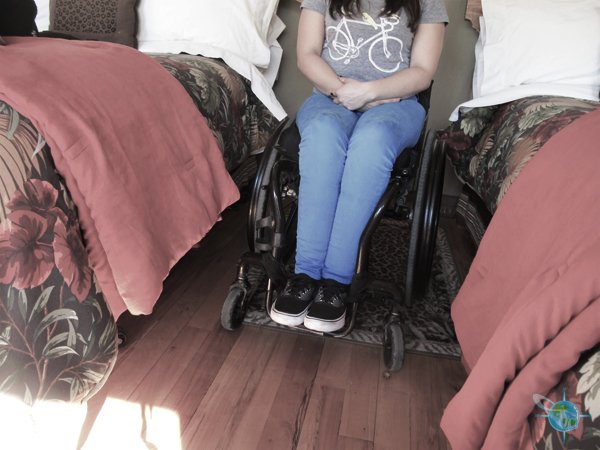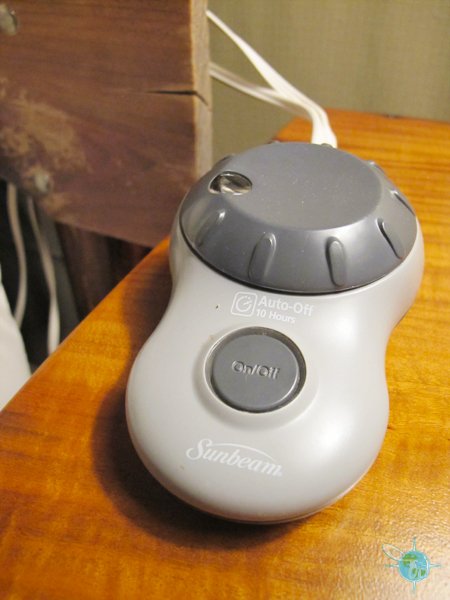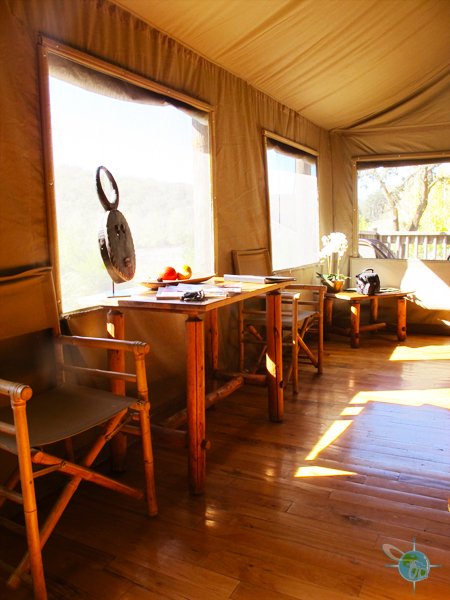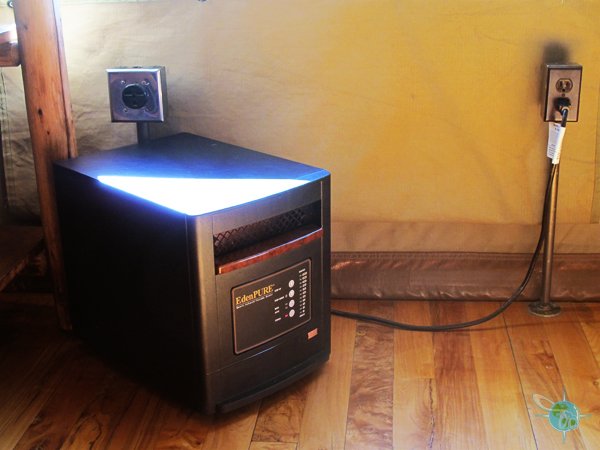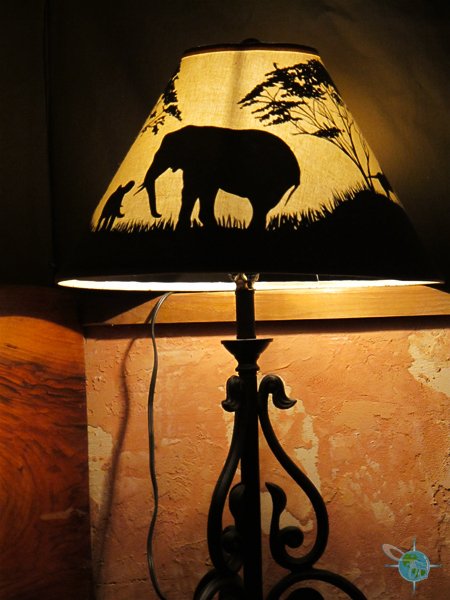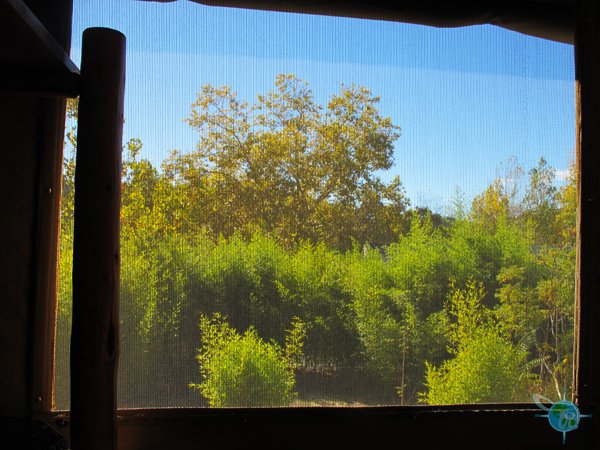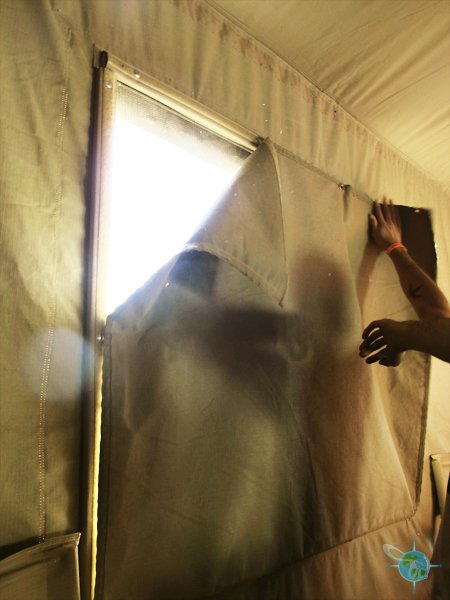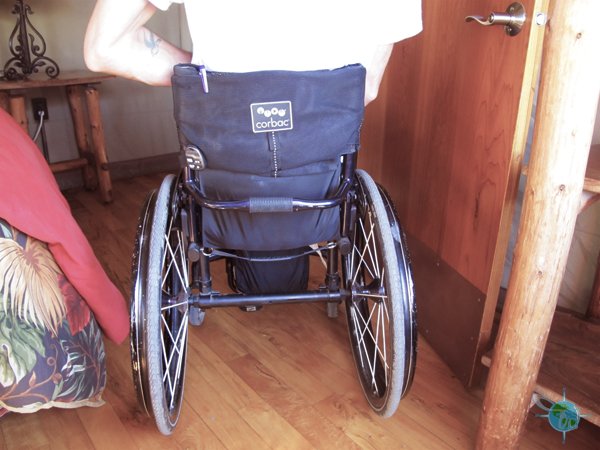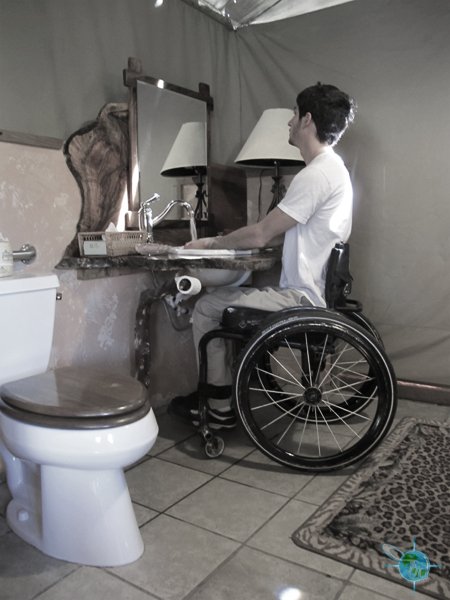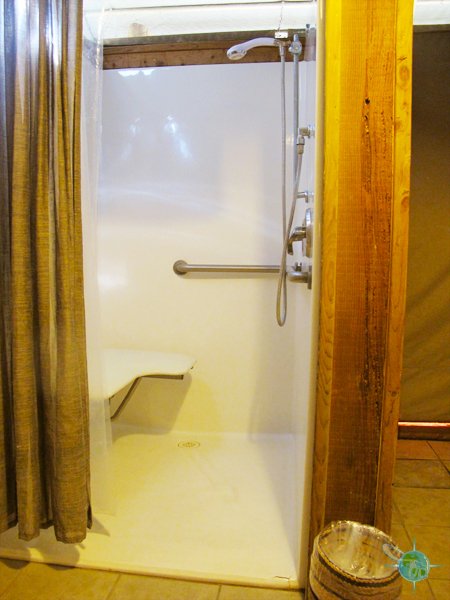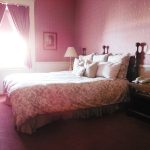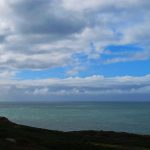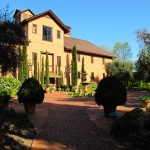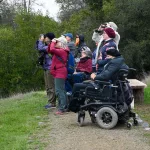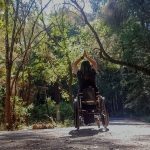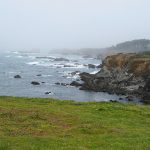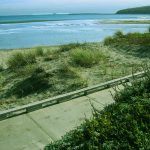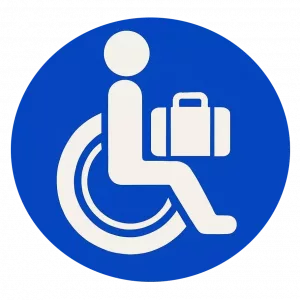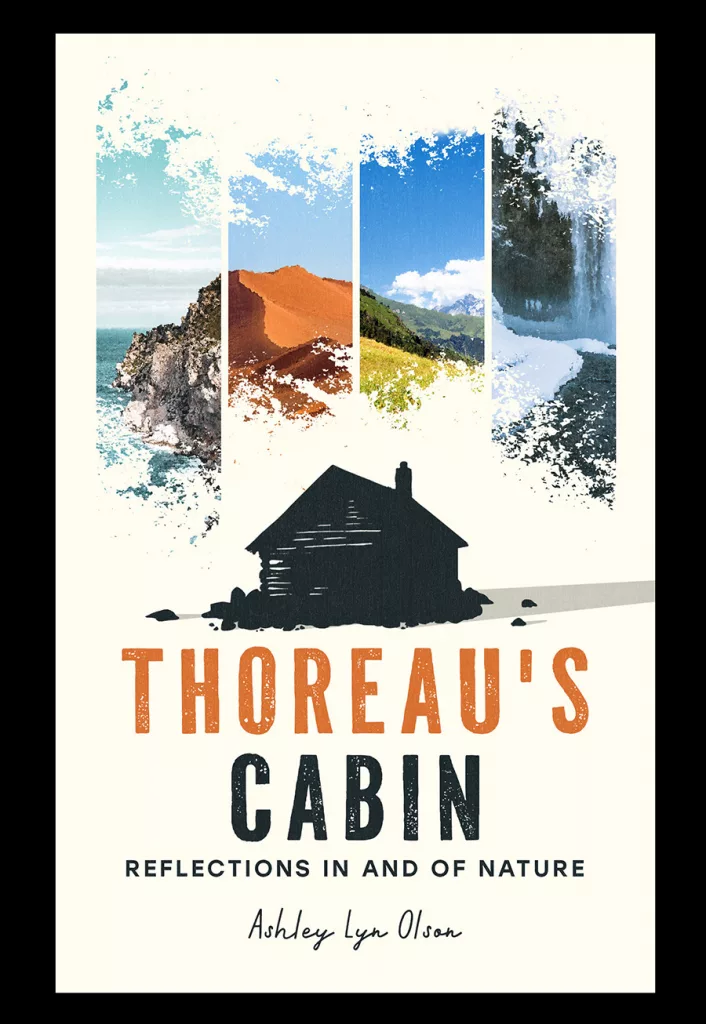Upon arrival I turned off my cell phone; it was worthless now because I was in a reception dead zone. At check-in I asked the receptionist about a card or key for the room, “no locks on tents” she replied with a coy smile. I made my way to one of two wheelchair accessible tents on site just past a group of lemur monkeys happily playing on a tree. The sound of wild African animals surged in the background but I was not in Africa, I was about an hour from San Francisco in the Sonoma Wine Country. Located just ten minutes from Downtown Calistoga on four hundred acres of rolling hills is an African oasis and private wildlife preserve open to the public for a day or overnight trips known as Safari West in Santa Rosa.
Transportation + Tour
Safari West has over seven hundred animals composed of over one hundred different species. You can view these animals on a narrated tour, which consisted of both a driving and “walking” portion. The whole tour takes about 2.5 to 3 hours. For the driving portion of the tour, one of two types of vehicles can be selected for a wheelchair user. A traditional safari jeep is an option for those with good balance and a strong upper body. This is because a person must be able to lift oneself into the jeep’s front seat with little assistance. Legally, the Safari West crew cannot be solely responsible for your transfer. Furthermore, the terrain these jeeps encounter is rugged with a few steep sections and there are no seatbelts so one must be able to keep him or herself from sliding off the seat. The jeep has a roof but is open to the elements so take this under consideration when selecting clothing and sunscreen application. On cold mornings, the crew of Safari West will provide blankets if desired.
Someone with little upper body control and strength or just not comfortable leaving one’s wheelchair, Safari West has an excellent alternative. Safari West purchased a paratransit vehicle that is equipped with a lift and the ability to transport three wheelchairs and four able body guests. Two of the three wheelchair spots have a partially obstructed view due to the location of the lift. All three spots have Q’Straint locking mechanisms to secure the wheelchair to the floor in four spots, which is commonly seen in accessible taxis. A seatbelt can also be used if needed. Currently, this vehicle is enclosed to the elements and has an HVAC system. However, Safari West is considering the idea of opening up at least two windows during the warmer months for a more authentic safari experience. To make this paratransit vehicle fit with the safari ambiance a professional painter turned it into a zebra including the rear. It is quite cute.
No matter what vehicle you are in, the tour begins with a brief overview of the property. All the animals at Safar West are treated like royalty receiving top-notch medical and dental care as well as a healthy diet. Varied-sized sections of the property are fenced off to create stress-free habitats. Some animals can coexist in the same habitat while others are too aggressive and need their own space. This design promotes the animals to have longer-lasting lives. One of the first habitats you see on the tour contains two different kinds of giraffes, ostriches, and exotic birds. In adjacent habitats are different groups of herd animals, including the beautiful snow-white Dama Gazelle. After that, you reach an impressive pair of Southern White Rhinoceros that are severely endangered. Due to the paratransit’s restricted ability to concur the unpaved steep and hilly terrain, the tour is cut short compared to the traditional jeep tour. A few groups of herd animals, like zebras and bison, roam the tops of the hills but it is physically unsafe to reach with the paratransit vehicle.
Depending on the condition of the road and the will of the guests onboard the tour guide will drive to the first animal habitat up in the hills before turning around, which is the Watusi Cattle. Known for their exceptionally long horns, these herd animals like many found at Safari West are sometimes hard to spot. The routes of the tours are designed to pass areas where these animals frequently gathered but nothing is guaranteed. On my paratransit tour, I was fortunate to see these massive breasts huddled together resting and grazing. The tour guide happily pointed out that a wild pig had somehow gotten onto the property and adopted itself as a member of the herd. The Watusi Cattle did not seem to mind the outsider and in fact, received milk from a few mothers.
Animal Exhibits Tour
The driving portion of the tour ends where you start. In the case of the paratransit, this is on the paved walkway behind the back patio. The jeeps always park near the café patio. The ground around the jeeps is not paved but the dirt and granite rock is so firmly packed that it may likely not slow you down. The “walking” tour begins on a paved pathway that meanders thru a number of small animals exhibits similar to a zoo.* You will see more exotic birds, a couple of miniature foxes, different kinds of monkeys, and three cheetahs to name a few.
It was magnificent to watch the powerful stride of the cheetahs as they paced back and forth with their eyes locked on me, intuitively knowing that I am easy prey. As fierce as these cats are, they are also quite delicate with no front claws to attack. At one point, two animal keepers entered the cage to toss a Frisbee around with one of the cheetahs. It liked to chase the Frisbee but lacked the retrieve skill or desire for that matter; typical feline. And like most cats, after a little loving attention, it began to purr loudly.
After the cheetahs, the tour moved to the flamingo exhibit. The able-body people in the group cut across a grass field while I took the perimeter route. The pathway from this portion of the tour is made up of compressed dirt and granite as previously explained. There is a slight hill from the cheetah enclosure and another down to the flamingos. Surrounding a little less than half of the flamingo pond is the viewing area, a dirt-packed plateau. I was able to get up a gradual ramped section but the tour guide is able to assist if needed. The tour concludes in the bird sanctuary next to the flamingo pond. One must go thru two doors, one being locked, to get inside. This is to keep any birds from wandering out. Sometimes guests are able to feed the birds raw meatballs. Tips are not mandatory but are always appreciated during this closing portion of the tour.
* What is not a part of the “walking tour” is a viewing of the Lemur Monkeys which are located between the office and wheelchair accessible tents. There are two points of entry but the walkway that encircles the enclosure are cobblestones (right photo) so ease of access will be limited for some wheelchairs.
Food + Stuff
For those just on a day visit to Safari West, a trip to the café and gift shop is all that’s left to do. If looking for a quick bite then try the snack shop, which is open during warmer months and selected days when it is cold. For guests that are staying on-site, a reservation is not needed for the café but is required for day-trip guests. The BBQ Ranch Lunch is served at 12pm (1pm during winter) and the Safari Ranch Dinner is served at 6:30pm (5:30pm during winter). Certain special dietary needs, but not all, may be accommodated. If concerned, it’s a good idea to speak to the reservationist about what is possible.
Both lunch and dinner are staff-served buffets so if you need a hand carrying your plate to a table there are people right there to assist. Wine, beer, and non-alcoholic beverages are available for an additional fee. Most people sit outside on the patio which surrounds a large firepit, however, inside seating is also an option in the “Elephant Room.” It’s called the elephant room because there is a very large and impressive wood carving of elephants. For guests staying overnight, the “Elephant Room” is where the complimentary continental breakfast is served. Two wheelchair accessible restrooms are located in this area, just follow the many signs displayed or ask a Safari West employee.
Accessible Tent Room
After a satisfying dinner, I made my way back to the tent. The accessible tent that I was staying in was 2H and up a fairly large dirt hill. To avoid this, I could have driven down to the bottom but this was an inconvenient option. Mark, the hospitality director, was on point and asked if I wanted a push. “Of course,” I said graciously. Future plans of Safari West include an ADA paved ramp from each of the accessible tents down to the new vehicle tour loading area.
From the deck of my accessible tent, I could see that these plans are already underway. I sat on the deck as the blanket of the night grew heavier, watching my surroundings vanish. The only light was coming from a few nearby tents and the stars overhead. All the animals were quieting down beside the flamingos that continued to squawk for hours. They would be the last animal I heard and the first in the morning. ‘What a wonderful day,’ I thought gazing up at the stars, and then almost instantly a shooting star streaked across the sky as if to reassure me.
From the outside, the tent looks like a typical tent you would find on a safari in Africa. In fact, the thick canvas is imported from Africa, but once thru the wooden door you may find this to be the most luxurious tent you have ever seen. Beautiful wood floors and hand-carved furniture immediately give off an elegant touch. In both accessible tents were two full-size beds with open access to either bed on both sides. Heated blankets are provided for each bed year-round. The pathway was wide to the opposite side of the room where the bathroom is.
The bathroom door swung open into the room narrowing the access space into the bathroom between the bed and shelf but remaining an ADA-approved 36.” The handicapped bathroom was plenty wide and included a beautiful wood roll-up sink and a roll-in shower with a built-in padded bench and hand-held shower nozzle. The bathroom is open to the air so during colder months it’s a good idea to keep the door closed, especially at night, cause temperatures will reach low 60s or even colder. In general, the mornings are colder than the evening so consider this when planning your shower schedule.
These tents are certainly luxurious but one must still be realistic about amenities. There is no refrigerator but Safari West provides a cooler on the deck. Furthermore, the window screens are mesh to keep bugs out and can be covered by a piece of the tent’s thick canvas. The window coverings stay closed with Velcro on three sides. I was not able to close the window because the top Velcro was out of my reach, so assistance from another may be needed.
One window was located partially behind one of the beds which was a little challenging for a wheelchair user. The kind of windows used and the open-air ventilation in the bathroom makes the room vulnerable to the temperature. In addition to closing the bathroom door at night and the heated blankets, a space heater is provided on the floor. During warmer months, a fan can be provided if needed. Furthermore, power outlets are raised off the ground for when you need to charge your camera, power wheelchair, etc. The room does not have a hair dryer, telephone, or television but one can enjoy an in-room massage with prior arrangements.
About the Owners
The owners, Nancy and Peter, are very involved in every aspect of Safari West. Peter is frequently seen roaming the property often with one of his dogs following close by. Nancy and Peter live on-site and so do most of their employees creating one big happy family. All the employees are genuine and seem to love working at Safari West. Nancy and Peter have worked very hard to make their property accessible to nearly everyone.
They even established a tactile tour for the blind. Their efforts are continuous but the physical terrain of the property restricts their ability to have complete universal access for every kind of physical disability. Nonetheless, I applaud what they have been able to do and the kinds of disabilities they have been able to accommodate. Safari West is an African adventure with comfortable modern-day conveniences for nearly any wheelchair user. Come and explore Africa in Northern California, and come hear the call of the wild.
Last updated on July 10, 2023
